Abstract
Pieces of ferret trachea and human bronchi were mounted in Ussing chambers and given [35S]sulphate as a radiolabelled precursor of mucous glycoproteins (mucins). The output of 35S bound to macromolecules was studied as an index of mucin secretion. In the ferret trachea, electrical field stimulation increased the rate of mucin secretion. Tetrodotoxin (10(-7) M or 10(-6) M) abolished this effect. Pilocarpine (25 microM) stimulated the output of mucins from human bronchus. Atropine (10(-5) M) abolished this effect. Electrical field stimulation of human bronchus stimulated mucin secretion. Tetrodotoxin (10(-6) M) abolished this effect. Field stimulation in the presence of either atropine (10(-5) M) or atropine with l-propranolol (10(-5) M) and phentolamine (10(-5) M) caused no stimulation of mucin secretion rate. Some bronchi were treated with noradrenaline (10(-5) M) for 1 h to allow the adrenergic nerves to take up transmitter. Even in these, atropine prevented the effect of field stimulation. We conclude that activity in cholinergic nerves can stimulate mucin secretion in the bronchi in man. Our results provide no evidence that the adrenergic nerves or non-adrenergic, non-cholinergic nerves have a direct action on bronchial secretory cells in man.
Full text
PDF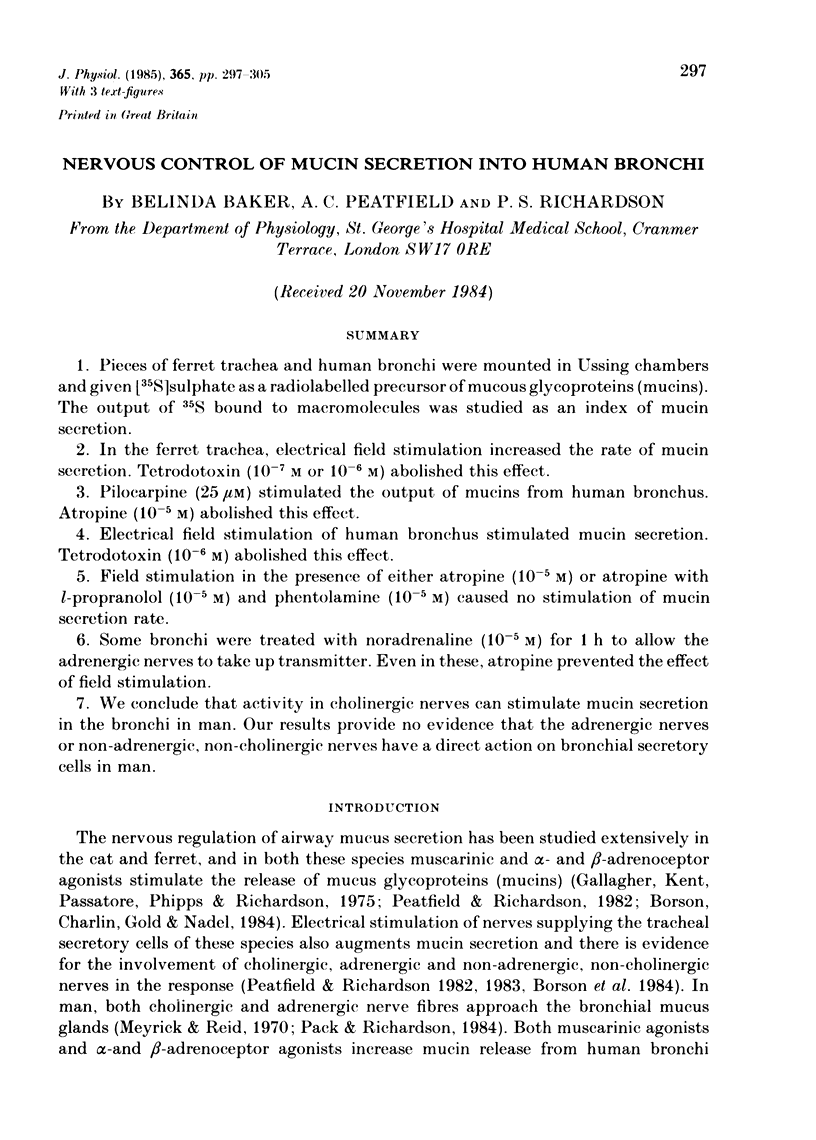

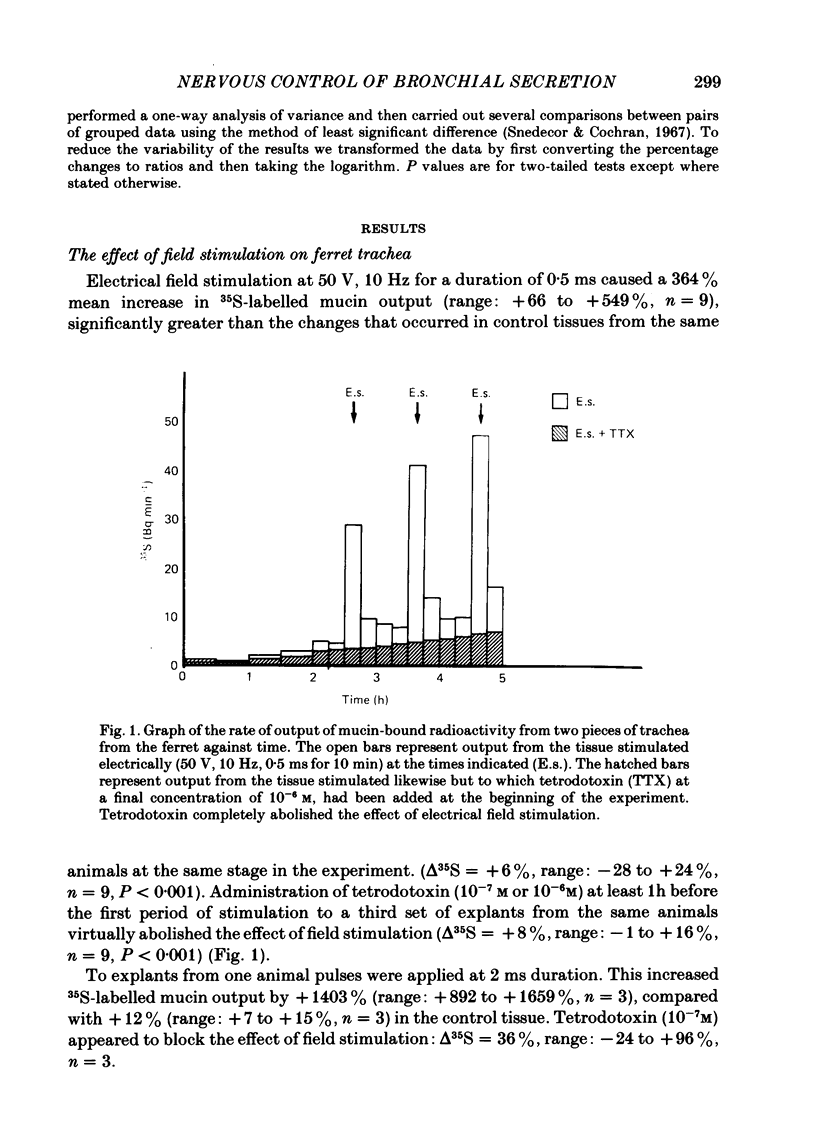
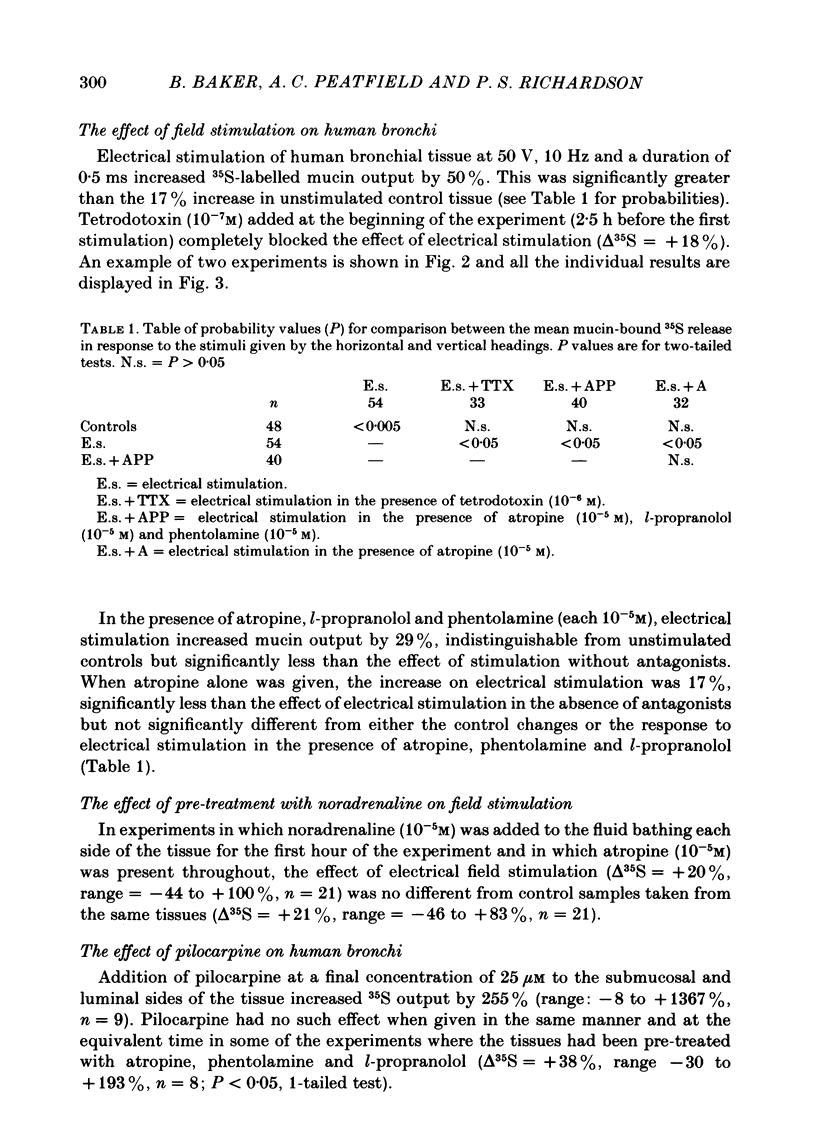


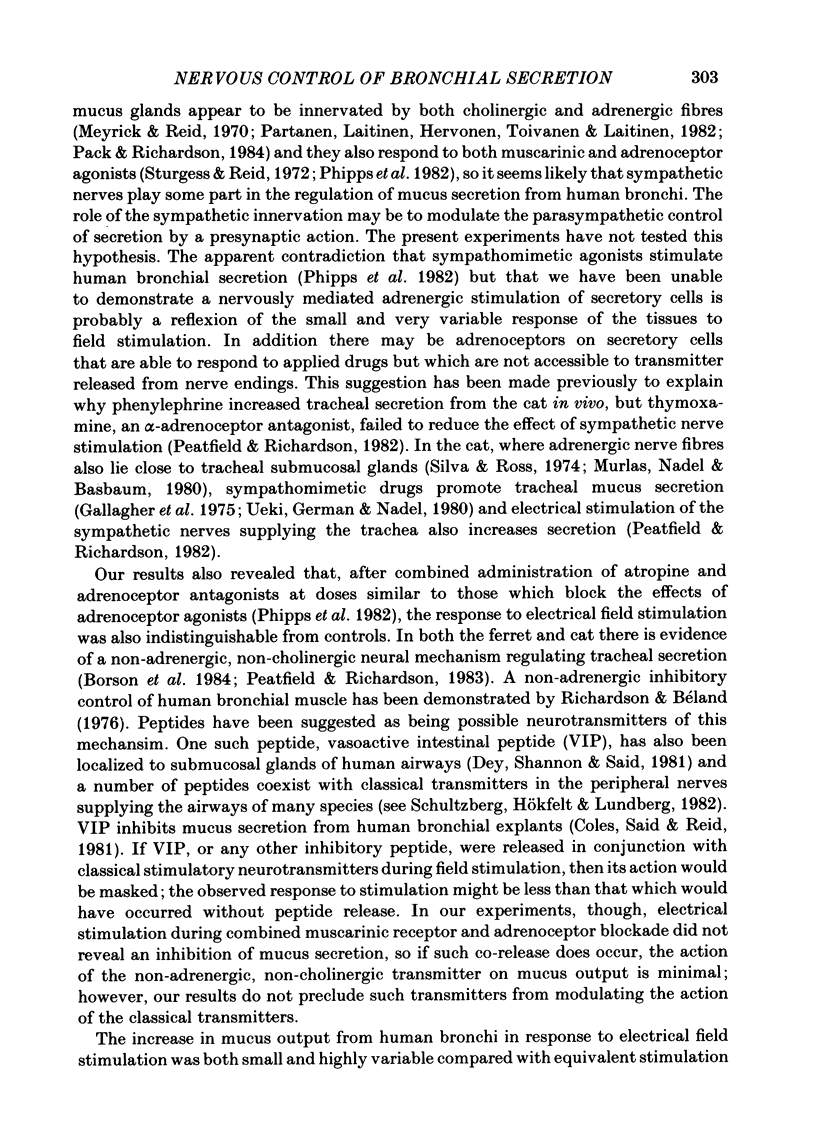
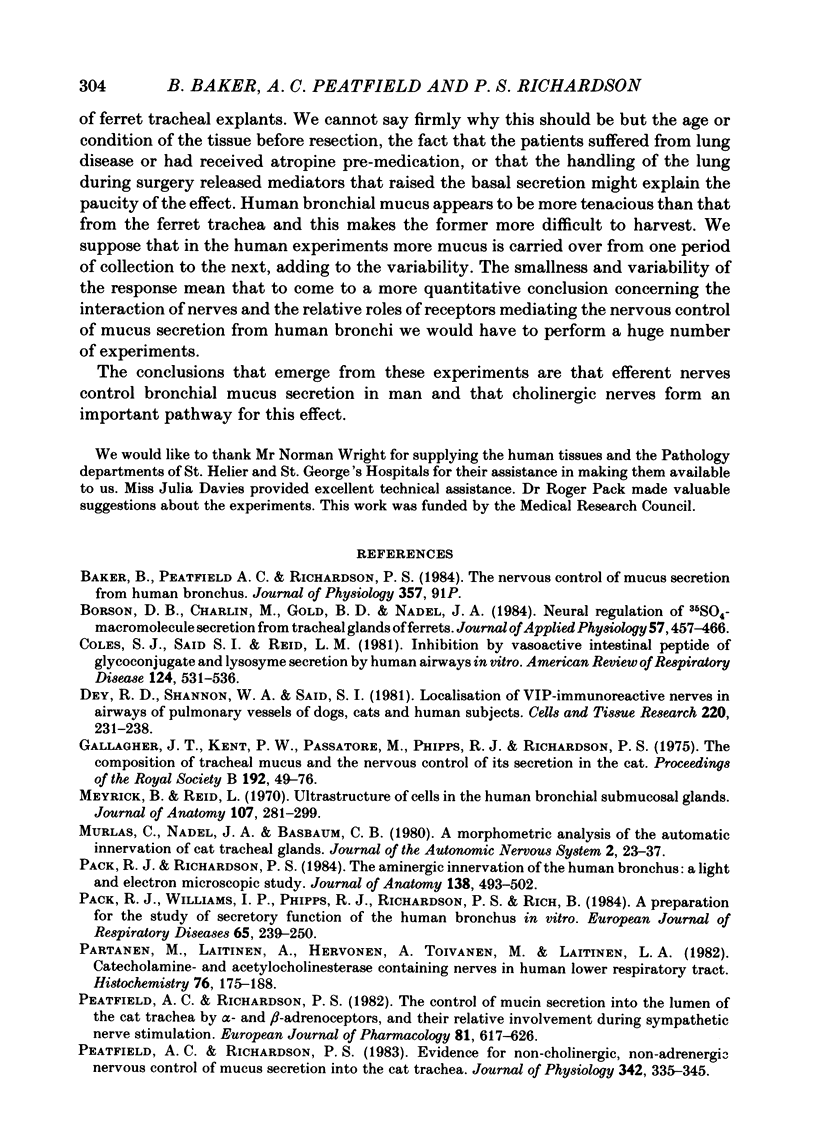
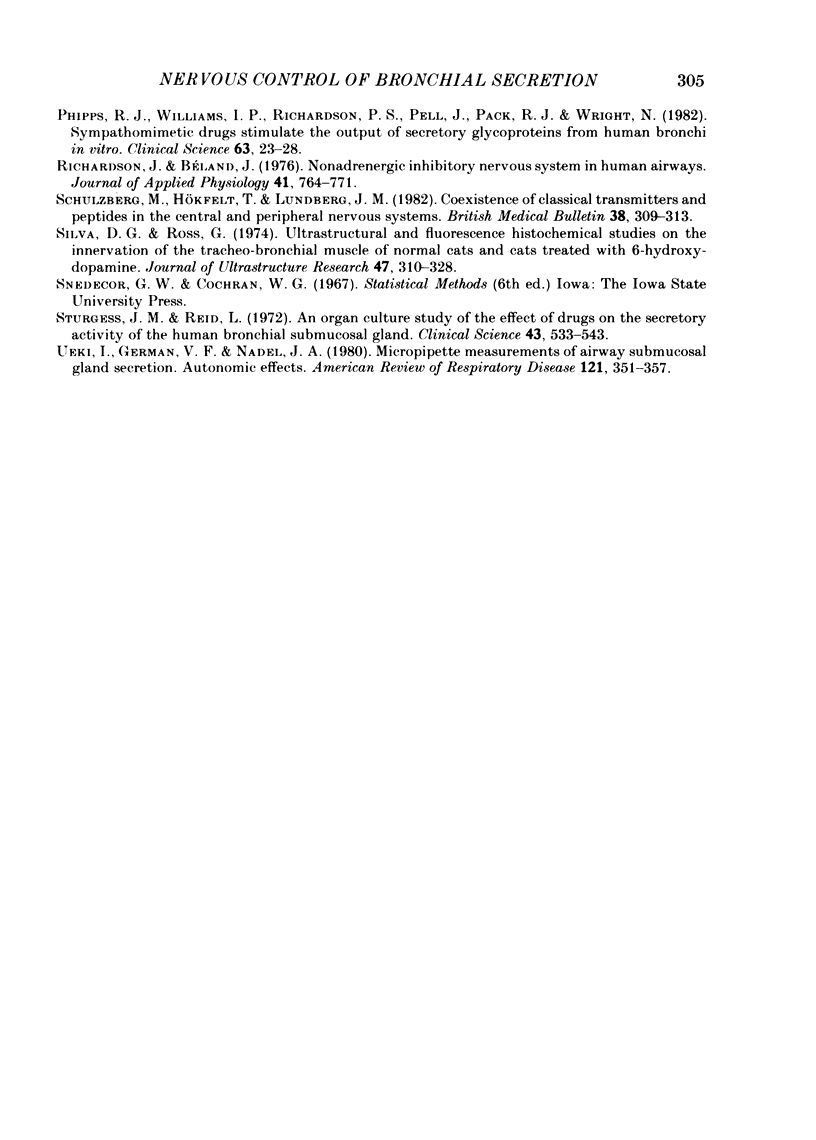
Selected References
These references are in PubMed. This may not be the complete list of references from this article.
- Borson D. B., Charlin M., Gold B. D., Nadel J. A. Neural regulation of 35SO4-macromolecule secretion from tracheal glands of ferrets. J Appl Physiol Respir Environ Exerc Physiol. 1984 Aug;57(2):457–466. doi: 10.1152/jappl.1984.57.2.457. [DOI] [PubMed] [Google Scholar]
- Coles S. J., Said S. I., Reid L. M. Inhibition by vasoactive intestinal peptide of glycoconjugate and lysozyme secretion by human airways in vitro. Am Rev Respir Dis. 1981 Nov;124(5):531–536. doi: 10.1164/arrd.1981.124.5.531. [DOI] [PubMed] [Google Scholar]
- Dey R. D., Shannon W. A., Jr, Said S. I. Localization of VIP-immunoreactive nerves in airways and pulmonary vessels of dogs, cat, and human subjects. Cell Tissue Res. 1981;220(2):231–238. doi: 10.1007/BF00210505. [DOI] [PubMed] [Google Scholar]
- Gallagher J. T., Kent P. W., Passatore M., Phipps R. J., Richardson P. S. The composition of tracheal mucus and the nervous control of its secretion in the cat. Proc R Soc Lond B Biol Sci. 1975 Dec 31;192(1106):49–76. doi: 10.1098/rspb.1975.0151. [DOI] [PubMed] [Google Scholar]
- Meyrick B., Reid L. Ultrastructure of cells in the human bronchial submucosal glands. J Anat. 1970 Sep;107(Pt 2):281–299. [PMC free article] [PubMed] [Google Scholar]
- Murlas C., Nadel J. A., Basbaum C. B. A morphometric analysis of the autonomic innervation of cat tracheal glands. J Auton Nerv Syst. 1980 May;2(1):23–37. doi: 10.1016/0165-1838(80)90004-1. [DOI] [PubMed] [Google Scholar]
- Pack R. J., Richardson P. S. The aminergic innervation of the human bronchus: a light and electron microscopic study. J Anat. 1984 May;138(Pt 3):493–502. [PMC free article] [PubMed] [Google Scholar]
- Pack R. J., Williams I. P., Phipps R. J., Richardson P. S., Rich B. A preparation for the study of secretory function of the human bronchus in vitro. Eur J Respir Dis. 1984 May;65(4):239–250. [PubMed] [Google Scholar]
- Partanen M., Laitinen A., Hervonen A., Toivanen M., Laitinen L. A. Catecholamine- and acetylcholinesterase-containing nerves in human lower respiratory tract. Histochemistry. 1982;76(2):175–188. doi: 10.1007/BF00501920. [DOI] [PubMed] [Google Scholar]
- Peatfield A. C., Richardson P. S. Evidence for non-cholinergic, non-adrenergic nervous control of mucus secretion into the cat trachea. J Physiol. 1983 Sep;342:335–345. doi: 10.1113/jphysiol.1983.sp014854. [DOI] [PMC free article] [PubMed] [Google Scholar]
- Peatfield A. C., Richardson P. S. The control of mucin secretion into the lumen of the cat trachea by alpha- and beta-adrenoceptors, and their relative involvement during sympathetic nerve stimulation. Eur J Pharmacol. 1982 Jul 30;81(4):617–626. doi: 10.1016/0014-2999(82)90351-x. [DOI] [PubMed] [Google Scholar]
- Phipps R. J., Williams I. P., Richardson P. S., Pell J., Pack R. J., Wright N. Sympathomimetic drugs stimulate the output of secretory glycoproteins from human bronchi in vitro. Clin Sci (Lond) 1982 Jul;63(1):23–28. doi: 10.1042/cs0630023. [DOI] [PubMed] [Google Scholar]
- Schultzberg M., Hökfelt T., Lundberg J. M. Coexistence of classical transmitters and peptides in the central and peripheral nervous systems. Br Med Bull. 1982 Sep;38(3):309–313. doi: 10.1093/oxfordjournals.bmb.a071778. [DOI] [PubMed] [Google Scholar]
- Silva D. G., Ross G. Ultrastructural and fluorescence histochemical studies on the innervation of the tracheo bronchial muscle of normal cats and cats treated with 6-hydroxydopamine. J Ultrastruct Res. 1974 Jun;47(3):310–328. doi: 10.1016/s0022-5320(74)90013-6. [DOI] [PubMed] [Google Scholar]
- Sturgess J., Reid L. An organ culture study of the effect of drugs on the secretory activity of the human bronchial submucosal gland. Clin Sci. 1972 Oct;43(4):533–543. doi: 10.1042/cs0430533. [DOI] [PubMed] [Google Scholar]
- Ueki I., German V. F., Nadel J. A. Micropipette measurement of airway submucosal gland secretion. Autonomic effects. Am Rev Respir Dis. 1980 Feb;121(2):351–357. doi: 10.1164/arrd.1980.121.2.351. [DOI] [PubMed] [Google Scholar]


